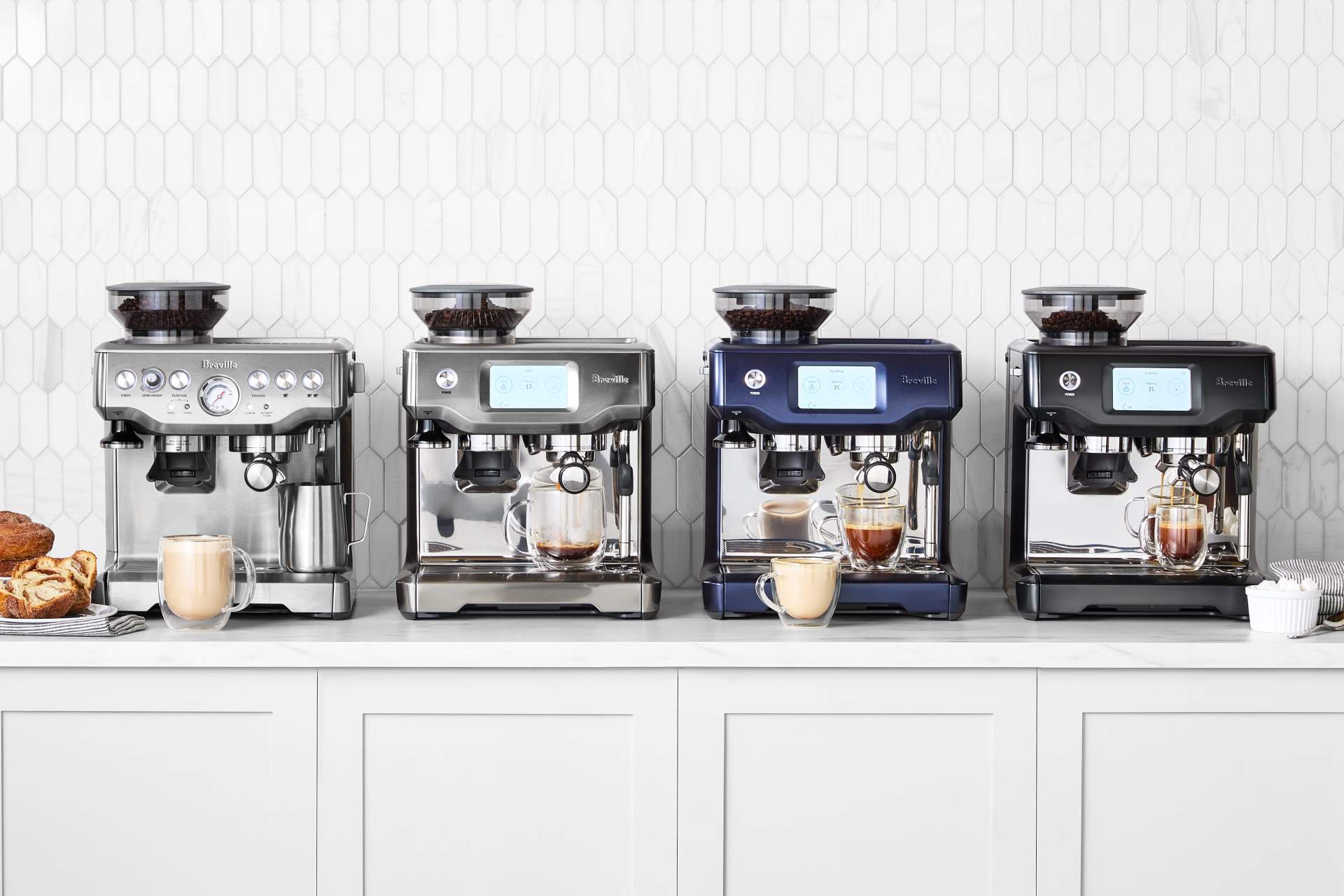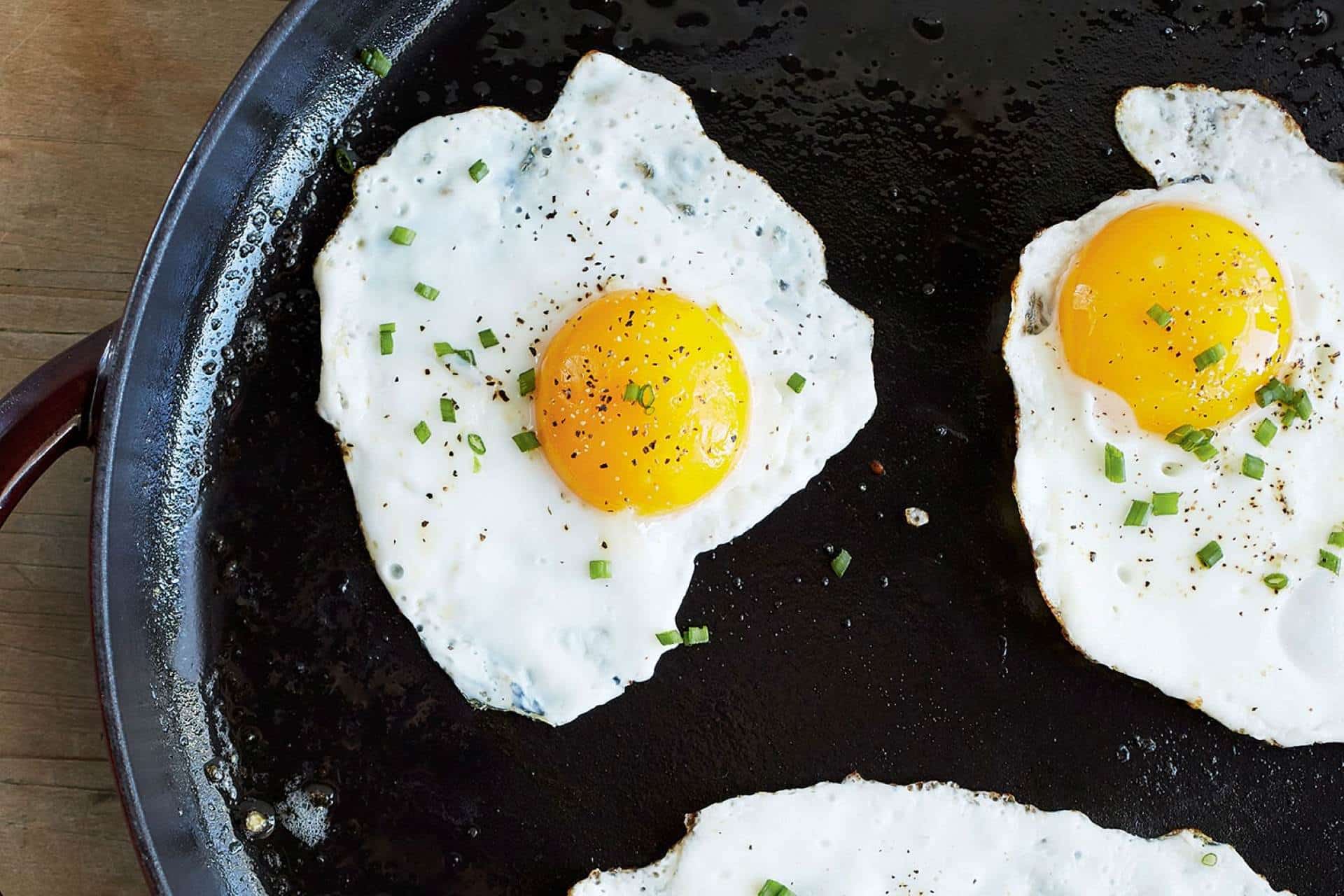Your morning brew, made by you, perfected by Breville.


From scrambled eggs to eggs Benedict, there are countless ways to cook eggs. However, not all methods are created equal, and some techniques require different tools and skills than others.
In this post, we’ll cover 8 different methods you should have in your back pocket, sharing our resident chef’s favorite tools and techniques.
Hungry for more? Explore our cooking classes to learn tips & tricks from our chefs!
Scrambled eggs are as classic as it gets, but everyone’s got a secret on how to get the fluffiest batch. We’ll share ours.
What’s Needed:
Technique: Crack the eggs into a mixing bowl and add milk.
Whisk the eggs and milk together until smooth and creamy. Then, heat a nonstick pan over low heat; add butter and allow it to melt until foamy.
Pour your egg-and-milk mixture into the pan and gently pull the eggs from the edges toward the center of the pan. Once the eggs start to thicken and form curds, gently fold the eggs over themselves. Add a pinch of salt and pepper to the eggs and continue stirring (this is the key to fluffy, pillowy eggs!) and folding until they’re nearly set.
If you’ve ever come across an omelet station, you know they’re endlessly customizable—from onions, mushrooms and avocado to salmon, crème fraîche and chives.
What’s Needed:
Technique: With a little finesse and practice, you’ll have perfect omelets in no time.
Start by cracking the eggs into a mixing bowl and whisk until frothy. Then, heat a nonstick pan over medium-high heat and add butter, swirling it around the pan until it melts and foams. Once the butter melts, pour the eggs into the pan.
Once they start to set and thicken, use a spatula to gently lift the edges of the omelet, allowing the uncooked egg to flow underneath. Once the top of the omelet is almost set, add your fillings. Use the spatula to fold one side of the omelet over the filling toward the middle. Repeat on the other side.
Allow the omelet to cook for a few more seconds until the filling is heated through. Tilt the pan slightly and use the spatula to slide the omelet onto a plate. Season and serve.
Get our Omelet with Smoked Salmon, Crème Fraîche and Chives Recipe!
Sunny-side up eggs are a staple on our ever-beloved avocado toast. The simple preparation allows the flavor of the eggs to shine through, keeping the yolks runny for that first fork through.
What’s Needed:
Technique: Want the perfect sunny-side up egg? This one is surprisingly simple and takes just a bit of patience.
Heat a nonstick pan over medium heat and add butter, allowing it to melt all the way down. Crack the eggs one at a time into the pan, being careful not to break the yolks. Sprinkle with salt and pepper.
Once the whites are set and the edges are slightly crispy, use the spatula or turner to carefully remove the eggs from the pan and serve.
How’s an over easy egg different from a sunny-side up egg? Don’t worry—it’s not a riddle—it’s just flipped over to cook the top.
What’s Needed:
Technique: This one is similar to a sunny-side up egg, but we’re just adding one more step.
Heat a nonstick pan over medium heat and add butter, allowing it to melt all the way down. Crack the eggs one at a time into the pan, being careful not to break the yolks.
Use a spatula to carefully flip the eggs over and cook for an additional 30 seconds for over easy, one minute for medium and two minutes for hard.
The oft forgotten soft-boiled eggs have a liquid yolk and a semisolid white—a great choice on toast. Perfect in ramen , medium-boiled eggs have a slightly firmer yolk and a fully set white. Hard-boiled eggs have a fully set yolk and white—we love these on salad or as a high-protein snack.
What’s Needed:
Technique: Take this one with more of a “have it your way” approach.
First, you’ll bring a pot of water to a boil over high heat. Gently place the eggs into the boiling water using a spoon. Depending on how soft or hard you want your eggs, here’s a guideline for cooking times:
Once you get your desired set, remove the eggs from the pot and place them in a bowl of cold water to stop the cooking process.
While poached eggs on eggs Benedict can feel intimidating to make, it’s really the Hollandaise that’s tricky. Master this technique, and you’ll be tossing poached eggs on salads, hashes and Benedicts with ease.
What’s Needed:
Technique: Bring a large pot of water to a gentle simmer over medium heat. We like to add a splash of white vinegar to the water (about 1 tablespoon per 2 cups of water) to help the egg whites coagulate faster.
Crack one egg into a small bowl or ramekin. Then, in the saucepan, use a spoon or whisk to create a gentle whirlpool in the center of the pot. Carefully pour the egg into the center of the whirlpool. The swirling water will help the egg white wrap around the yolk.
Cook the egg for 3–4 minutes, or until the egg white is set and the yolk is still runny. Use a slotted spoon to carefully remove the poached egg and place it on a paper towel to remove excess water before serving.
Get our Smoked Salmon Eggs Benedict with Hollandaise Recipe!
Undoubtedly the least fussy option on the list, baked eggs let the oven do its thing, make a great presentation when served in mini cocottes and can be filled with anything from spinach and leeks to bacon and Gruyère.
What’s Needed:
Technique: Preheat your oven to 350°F (175°C).
Grease a cocotte with butter, add your choice of fillings and crack one or two eggs on top, being careful not to break the yolks. Season with salt and pepper. Drizzle a small amount of heavy cream over the eggs to help them cook evenly and to give them a creamy texture.
Bake the eggs for 12–15 minutes, or until the whites are set and the yolks are cooked to your liking. Remove the cocotte from the oven and let it cool for a few minutes before serving.
Sous vide eggs are cooked low and slow, resulting in a silky, custard-like texture that’s hard to achieve otherwise. The beauty of this method is that the precision of a sous vide cooks eggs to the perfect doneness every time.
What’s Needed:
Technique: This one’s for the scientists or the gadget-lovers in your life.
Grab your sous vide and preheat to the right temperature:
Gently crack the shell and place the egg into a sous vide bag, being sure not to break the yolk. Seal the bag and place it into the preheated water bath, then cook until desired doneness:
Once the timer goes off, remove the bag from the water bath. Carefully remove the eggs from the bag using a slotted spoon and serve.
Get our Frisee Salad with Sous Vide Egg Recipe!
Hungry for more? Explore our cooking classes to learn tips & tricks from our chefs!
This was great for learning new ways to cook eggs! Now I’m hungry…
Can you make these eggs as well in the stainless steel pans?